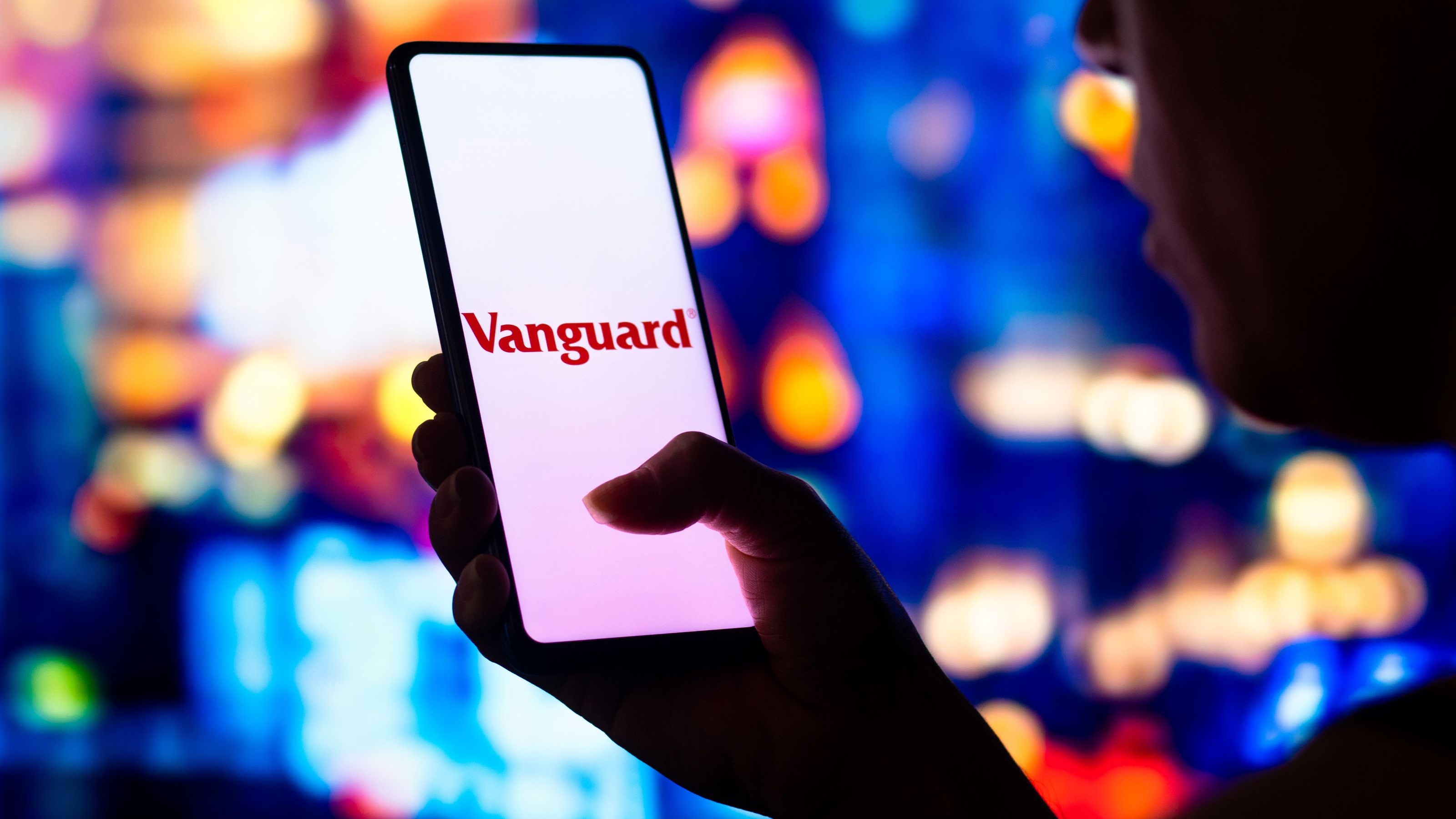4 Funds to Cut Your Risk in a Stock Market Correction
These low-volatility funds can keep your portfolio from getting creamed during the next selloff.

I don’t think that the recent market rumblings are signaling the onset of a bear market. But stocks are richly priced, and we’re overdue for at least a 10% plunge in share prices, which typically occurs once or twice a year, shaking investors’ confidence.
Particularly if the eight-year bull market has pushed your allocation to stocks higher than you intended, this could be an ideal time to reduce risk. We suggest here three first-rate exchange-traded funds and one mutual fund that let you ratchet down risk without making the mistake of dumping all your stocks.
These “low-volatility” funds let you profit from the stock market’s good times without getting creamed in the bad times. Make no mistake, when the market tumbles, they’ll go down, too. But numerous academic studies have shown that stocks with lower volatility or standard deviations—meaning they jump around less than the market does and don’t stray too far from their average prices over time—have provided better risk-adjusted returns than more-volatile stocks.

Sign up for Kiplinger’s Free E-Newsletters
Profit and prosper with the best of expert advice on investing, taxes, retirement, personal finance and more - straight to your e-mail.
Profit and prosper with the best of expert advice - straight to your e-mail.
Low-volatility funds will almost certainly lag in bull markets, but they’re engineered to lose less than their benchmark indexes in bear markets. That means they’ll probably trail riskier funds over the long term, says Alex Bryan, an ETF analyst at Morningstar.
Perhaps most important: Because these ETFs offer smoother rides, they’re a lot easier to hold on to during the market’s inevitable meltdowns. “If you define risk as underperforming the market, you don’t want these strategies,” Bryan says. “But if you define risk as losing money, low volatility is better.”
Low-volatility funds almost always load up on traditionally defensive sectors such as consumer staples, health care and utilities. In the current bull market, these sectors have been bid up above their historical average valuations, according to Research Affiliates, an investment firm in Newport Beach, Calif. Nevertheless, it’s hard to imagine a bear market in which they don’t hold up better than more economically sensitive sectors. But to be on the safe side, I’ve selected funds that limit sector overweights and underweights to no more than five percentage points above or below the allocation of the benchmark index.
The following are four favorites of Bryan’s and mine. All come from Blackrock, the giant firm that sponsors iShares, or Vanguard. While humans write and continually tweak the computer programs that select the stocks for the funds, these are all quasi-index strategies. (All returns are through August 25.)
iShares Edge MSCI Minimum Volatility USA ETF (symbol USMV, $49.94) returned an annualized 13.6% over the past five years, trailing Standard & Poor’s 500-stock index by a mere 0.4 percentage point per year. It accomplished that with 10% less volatility than the benchmark. We haven’t had a bear market since the fund’s inception, but over the past five years, in months in which the broad market went down, the fund declined only 60% as much as the market. The ETF favors stocks with relatively stable cash flows. Expenses are 0.15% annually.
iShares Edge MSCI Minimum Volatility EAFE ETF (EFAV, $70.65) applies the same approach to foreign developed stocks, charging 0.20% annually. The ETF was 20% less volatile than the MSCI All-Country World ex-USA index over the past five years. In months when the index fell, the ETF lost just half of what the index did. Because foreign stocks overall were in the doldrums during most of that five-year stretch, the ETF topped the index by an average of 1.9 percentage points annually. It returned an annualized 9.0% in the past five years.
iShares Edge MSCI Minimum Volatility Emerging Markets ETF (EEMV, $58.05) invests in emerging markets and charges 0.25% annually. It was 20% less volatile than the MSCI Emerging Markets index over the past five years. In months when the index lost ground, the ETF fell 78% as much as the benchmark. It returned only an annualized 3.1% during the five-year period, an average of 1.8 percentage points per year less than the index. True to form, this low-volatility choice lagged the broader benchmark as emerging markets began to rally in 2016. Look for the ETF to do relatively better during sell-offs, as it did in 2013–2015.
Vanguard Global Minimum Fund (VMVFX) gives you the entire low-volatility world in one package. This mutual fund has been around only three-and-a-half years, but returns to date are impressive. Over the past three years, the fund returned an annualized 9.8%, an average of 1.9 percentage points per year better than its benchmark, the FTSE Global All Cap Total Return index. In months when the index declined, the fund lost just 31% of what the index did. Returns through most of that period were helped by the fund’s policy of hedging all foreign-currency exposure. The fund currently has just over half of its assets in the U.S.
Global Minimum has a couple of wrinkles. It’s constructed primarily by studying how individual stocks interact with others to produce a low-volatility portfolio. Managers are allowed to delay buying or selling when there are changes in index holdings, which often translates into better prices for the fund. Like the iShares ETFs above, the fund limits overweights and underweights in sectors and countries to five percentage points above or below the levels in the index. It currently has a five-percentage-point overweight in health care. Expenses are 0.25% for the Investor shares and 0.17% for the Admiral shares, which require a $50,000 minimum.
I don’t view these funds as core holdings for any but the most risk-averse investors. But taking 10% or 20% from one of your more aggressive stock funds and adding it to one or two of these funds could help your investments produce solid returns while cutting your risk.
Steven Goldberg is an investment adviser in the Washington, D.C., area.
Get Kiplinger Today newsletter — free
Profit and prosper with the best of Kiplinger's advice on investing, taxes, retirement, personal finance and much more. Delivered daily. Enter your email in the box and click Sign Me Up.

-
 Stock Market Today: Great Power Affairs Mesmerize Markets
Stock Market Today: Great Power Affairs Mesmerize MarketsThe U.S. and China are at least talking about talking about tariffs, and investors, traders and speculators are showing a little less fear.
By David Dittman
-
 Is Walmart Plus Worth It?
Is Walmart Plus Worth It?There are tons of exciting Walmart Plus benefits – but are they worth the $98 annual fee?
By Rachael Green
-
 Smart Ways to Invest Your Money This Year
Smart Ways to Invest Your Money This YearFollowing a red-hot run for the equities market, folks are looking for smart ways to invest this year. Stocks, bonds and CDs all have something to offer in 2024.
By Jeff Reeves
-
 Vanguard's New International Fund Targets Dividend Growth
Vanguard's New International Fund Targets Dividend GrowthInvestors may be skittish about buying international stocks, but this new Vanguard fund that targets stable dividend growers could ease their minds.
By Nellie S. Huang
-
 Best 401(k) Investments: Where to Invest
Best 401(k) Investments: Where to InvestKnowing where to find the best 401(k) investments to put your money can be difficult. Here, we rank 10 of the largest retirement funds.
By Nellie S. Huang
-
 7 Best Stocks to Gift Your Grandchildren
7 Best Stocks to Gift Your GrandchildrenThe best stocks to give your grandchildren have certain qualities in common.
By Dan Burrows
-
 How to Find the Best 401(k) Investments
How to Find the Best 401(k) InvestmentsMany folks are likely wondering how to find the best 401(k) investments after signing up for their company's retirement plan. Here's where to get started.
By Deborah Yao
-
 How to Master Index Investing
How to Master Index InvestingIndex investing allows market participants the ability to build their ideal portfolios using baskets of stocks and bonds. Here's how it works.
By Nellie S. Huang
-
 The Best Vanguard ETFs to Buy
The Best Vanguard ETFs to BuyThe best Vanguard ETFs all feature rock-bottom fees, large asset bases and long trading histories. Here are a few of our favorites.
By Jeff Reeves
-
 Donor-Advised Funds: A Tax-Savvy Way to Rebalance Your Portfolio
Donor-Advised Funds: A Tax-Savvy Way to Rebalance Your PortfolioLong-term investors who embrace charitable giving can easily save on capital gains taxes by donating shares when it’s time to get their portfolio back in balance.
By Adam Nash